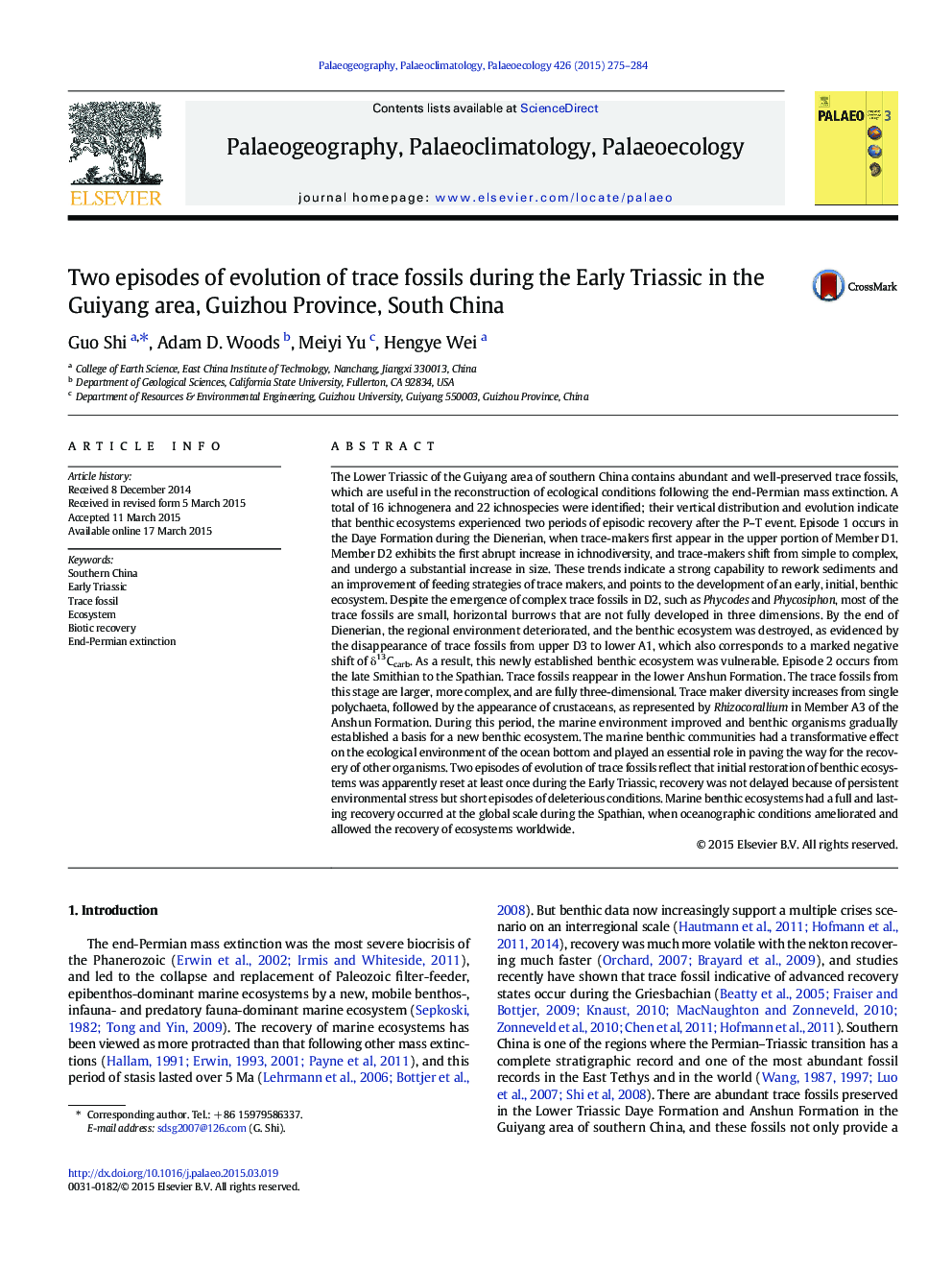| کد مقاله | کد نشریه | سال انتشار | مقاله انگلیسی | نسخه تمام متن |
|---|---|---|---|---|
| 4465998 | 1622164 | 2015 | 10 صفحه PDF | دانلود رایگان |

• We analyze marine benthic recovery after the P–T crisis through ichnofossils.
• Benthic ecosystems experienced two episodes recovery after P–T through ichnofossils.
• Restoration of marine ecosystems wasn't restricted latitudinally.
• Initial restoration of benthic ecosystems wasn't delayed.
• Marine benthic ecosystems had a full recovery occurred at the global scale during the Spathian.
The Lower Triassic of the Guiyang area of southern China contains abundant and well-preserved trace fossils, which are useful in the reconstruction of ecological conditions following the end-Permian mass extinction. A total of 16 ichnogenera and 22 ichnospecies were identified; their vertical distribution and evolution indicate that benthic ecosystems experienced two periods of episodic recovery after the P–T event. Episode 1 occurs in the Daye Formation during the Dienerian, when trace-makers first appear in the upper portion of Member D1. Member D2 exhibits the first abrupt increase in ichnodiversity, and trace-makers shift from simple to complex, and undergo a substantial increase in size. These trends indicate a strong capability to rework sediments and an improvement of feeding strategies of trace makers, and points to the development of an early, initial, benthic ecosystem. Despite the emergence of complex trace fossils in D2, such as Phycodes and Phycosiphon, most of the trace fossils are small, horizontal burrows that are not fully developed in three dimensions. By the end of Dienerian, the regional environment deteriorated, and the benthic ecosystem was destroyed, as evidenced by the disappearance of trace fossils from upper D3 to lower A1, which also corresponds to a marked negative shift of δ13Ccarb. As a result, this newly established benthic ecosystem was vulnerable. Episode 2 occurs from the late Smithian to the Spathian. Trace fossils reappear in the lower Anshun Formation. The trace fossils from this stage are larger, more complex, and are fully three-dimensional. Trace maker diversity increases from single polychaeta, followed by the appearance of crustaceans, as represented by Rhizocorallium in Member A3 of the Anshun Formation. During this period, the marine environment improved and benthic organisms gradually established a basis for a new benthic ecosystem. The marine benthic communities had a transformative effect on the ecological environment of the ocean bottom and played an essential role in paving the way for the recovery of other organisms. Two episodes of evolution of trace fossils reflect that initial restoration of benthic ecosystems was apparently reset at least once during the Early Triassic, recovery was not delayed because of persistent environmental stress but short episodes of deleterious conditions. Marine benthic ecosystems had a full and lasting recovery occurred at the global scale during the Spathian, when oceanographic conditions ameliorated and allowed the recovery of ecosystems worldwide.
Journal: Palaeogeography, Palaeoclimatology, Palaeoecology - Volume 426, 15 May 2015, Pages 275–284